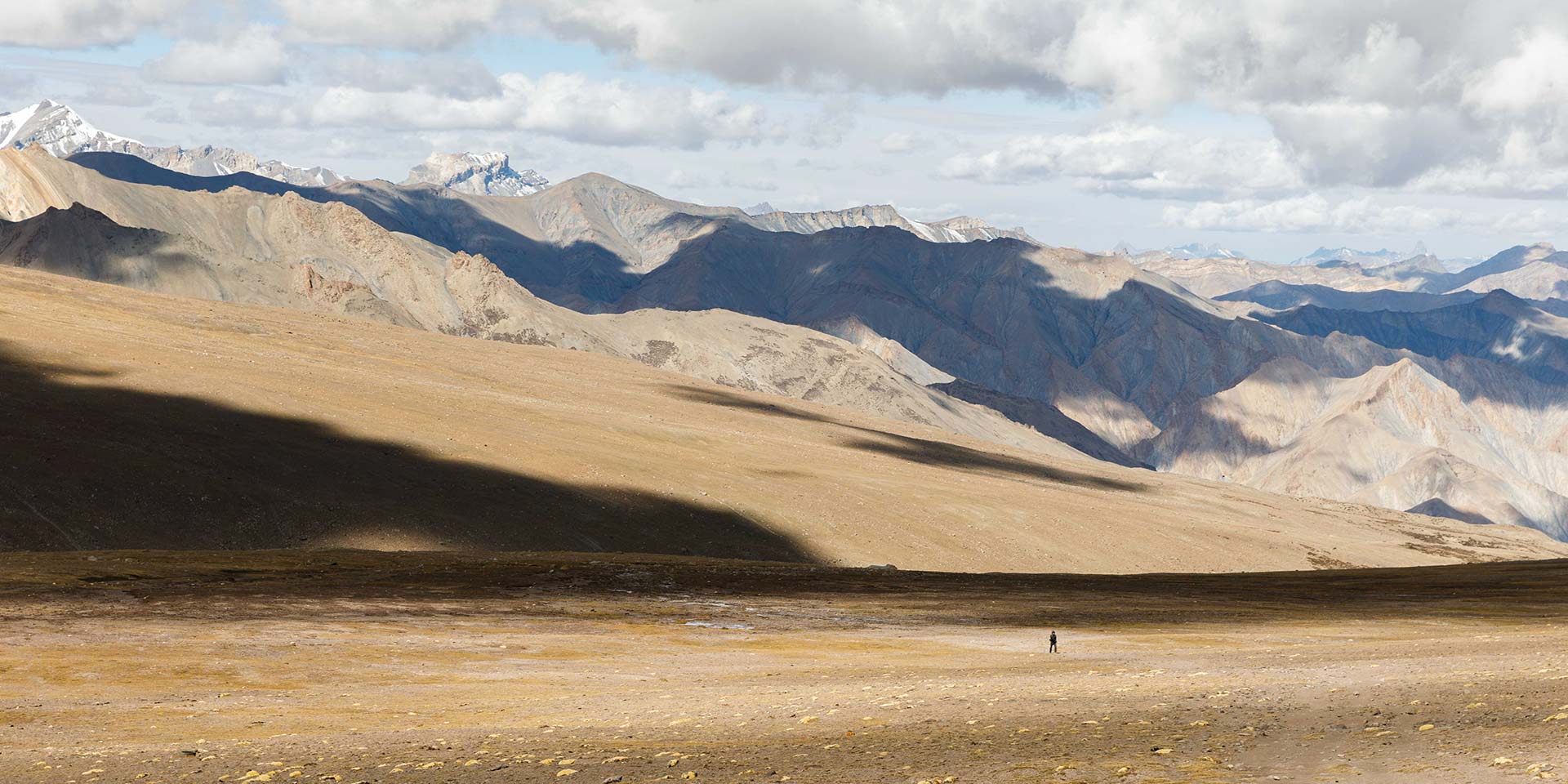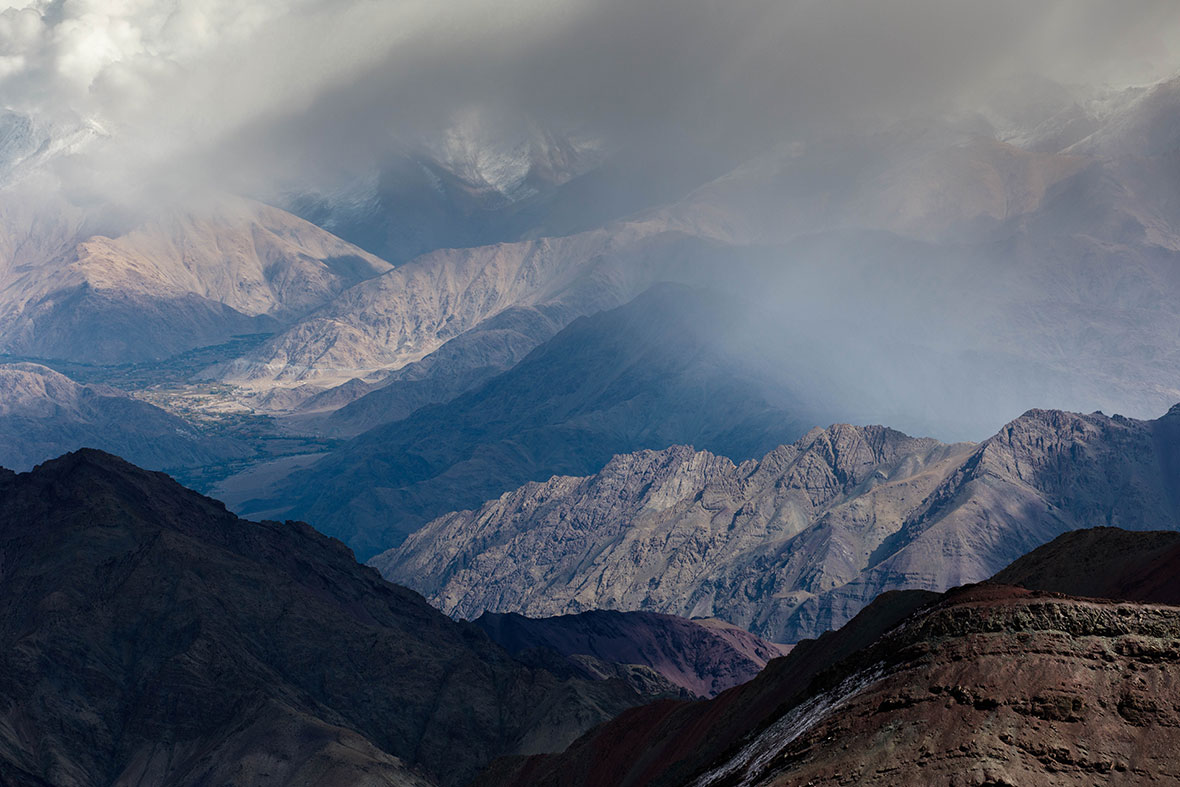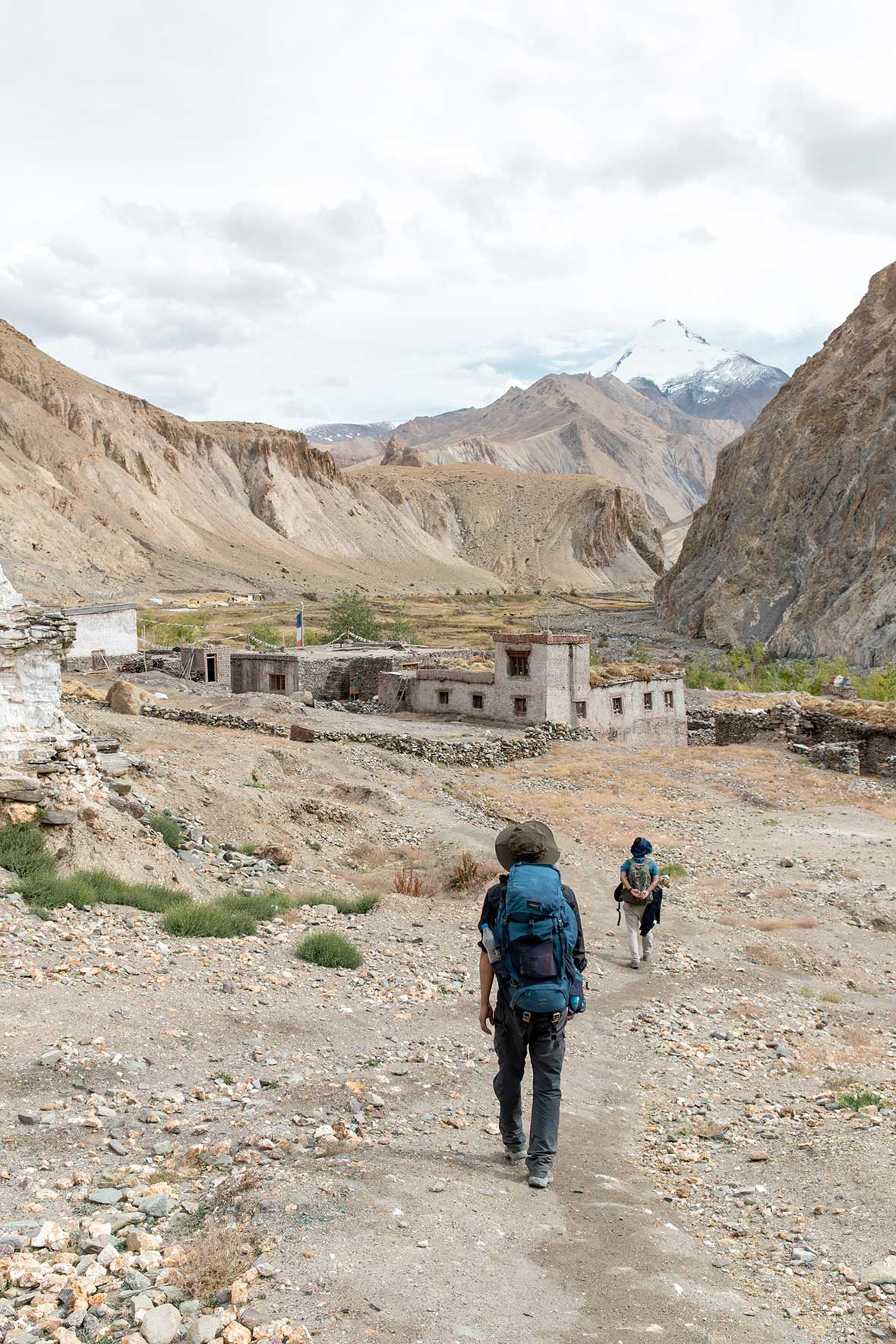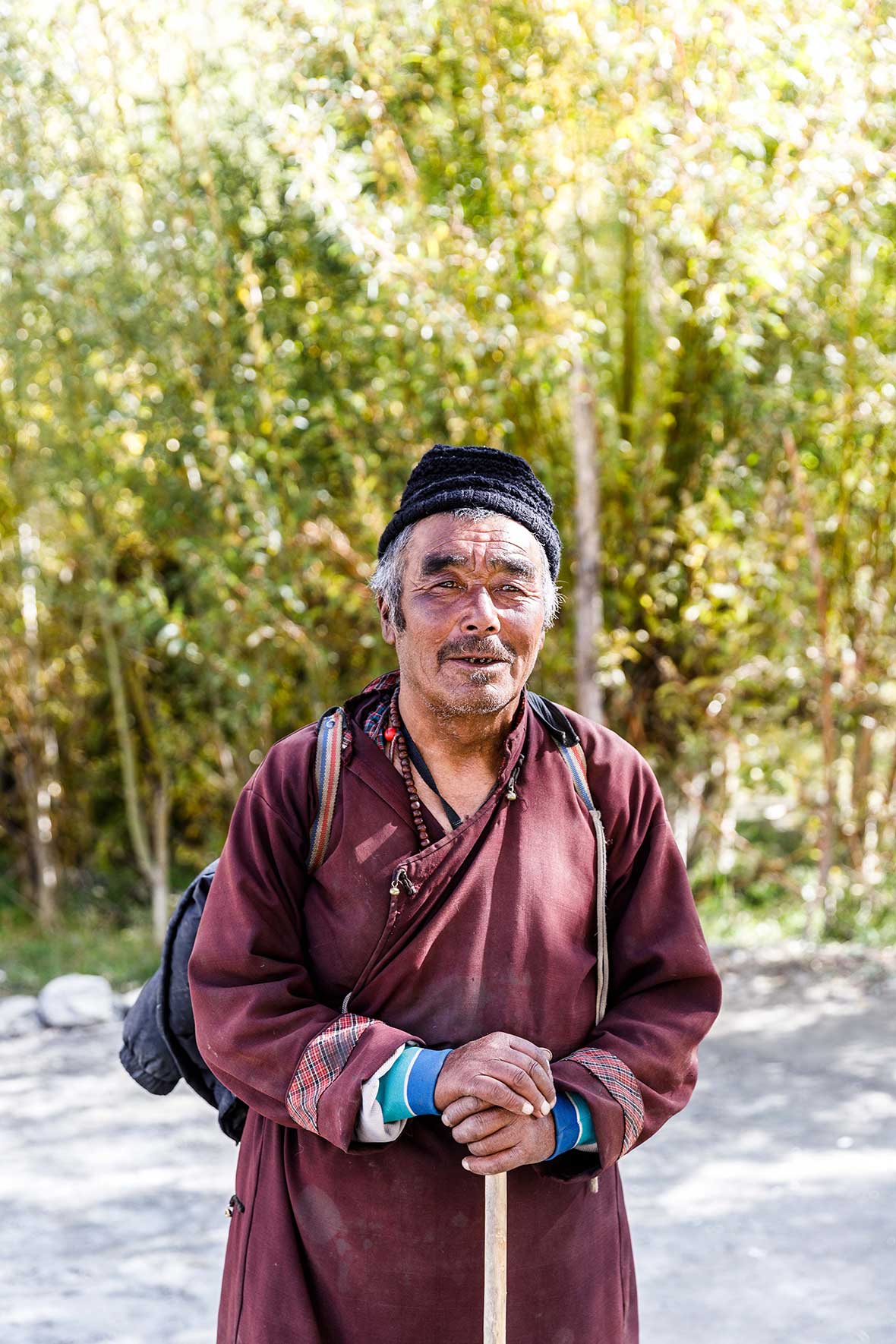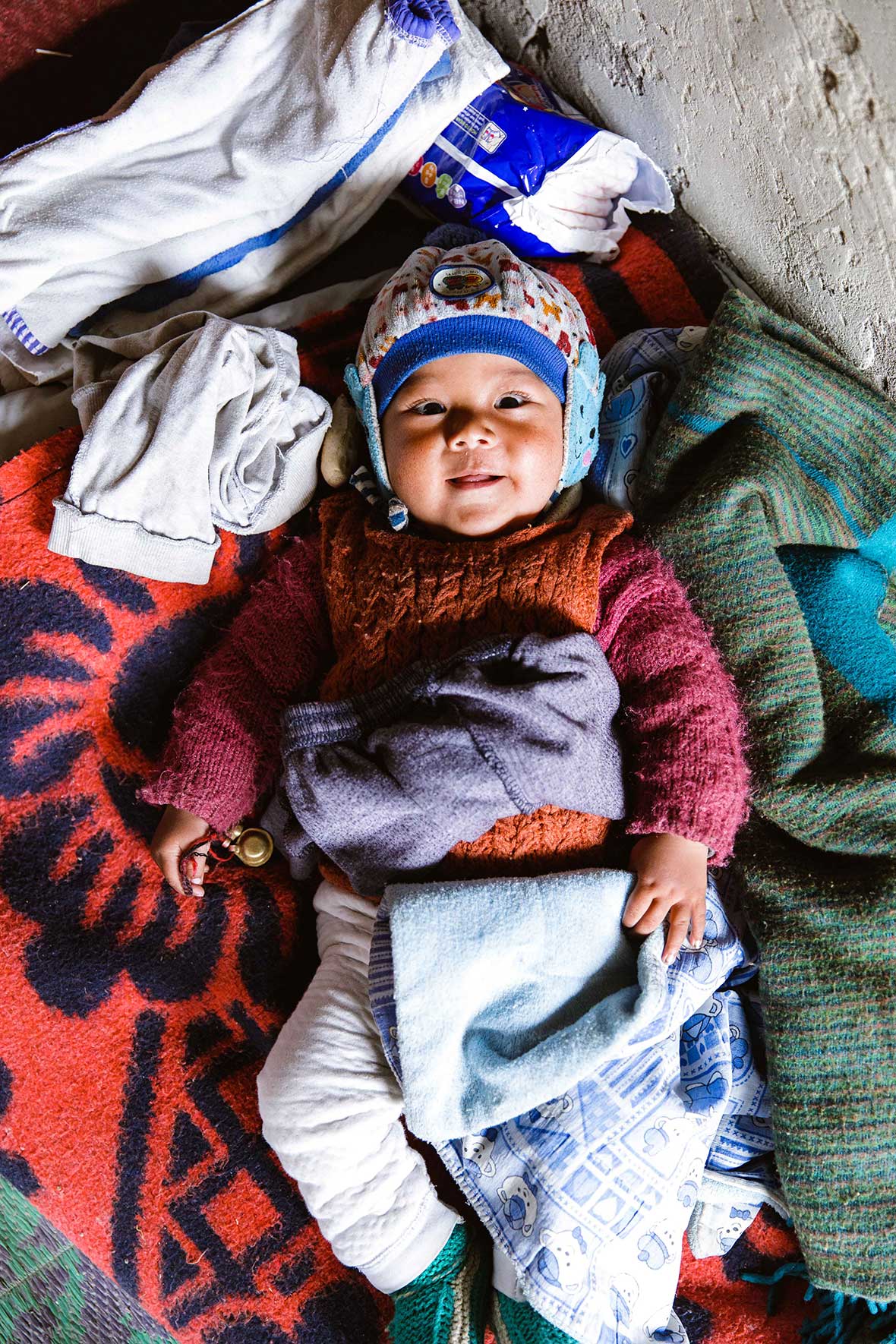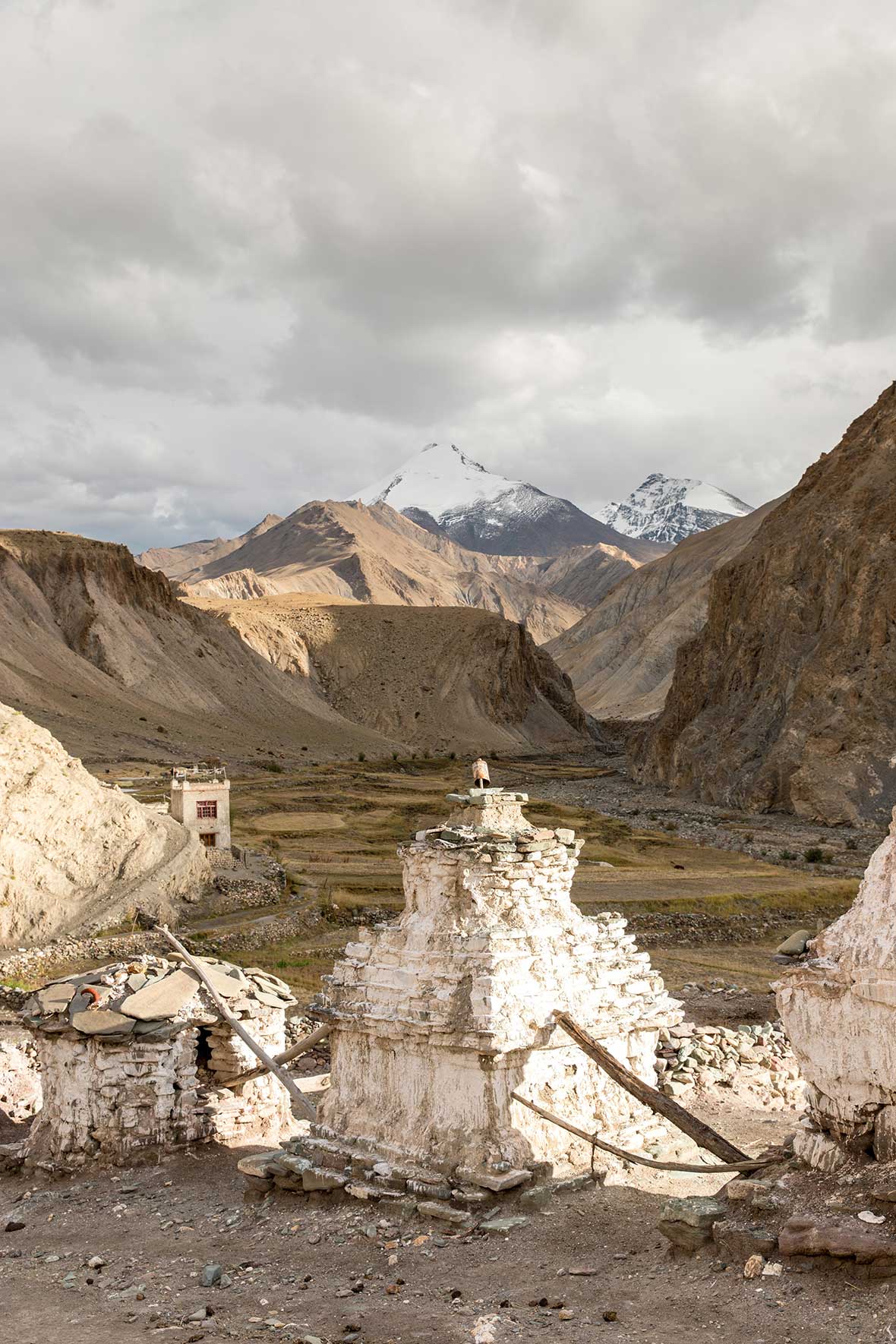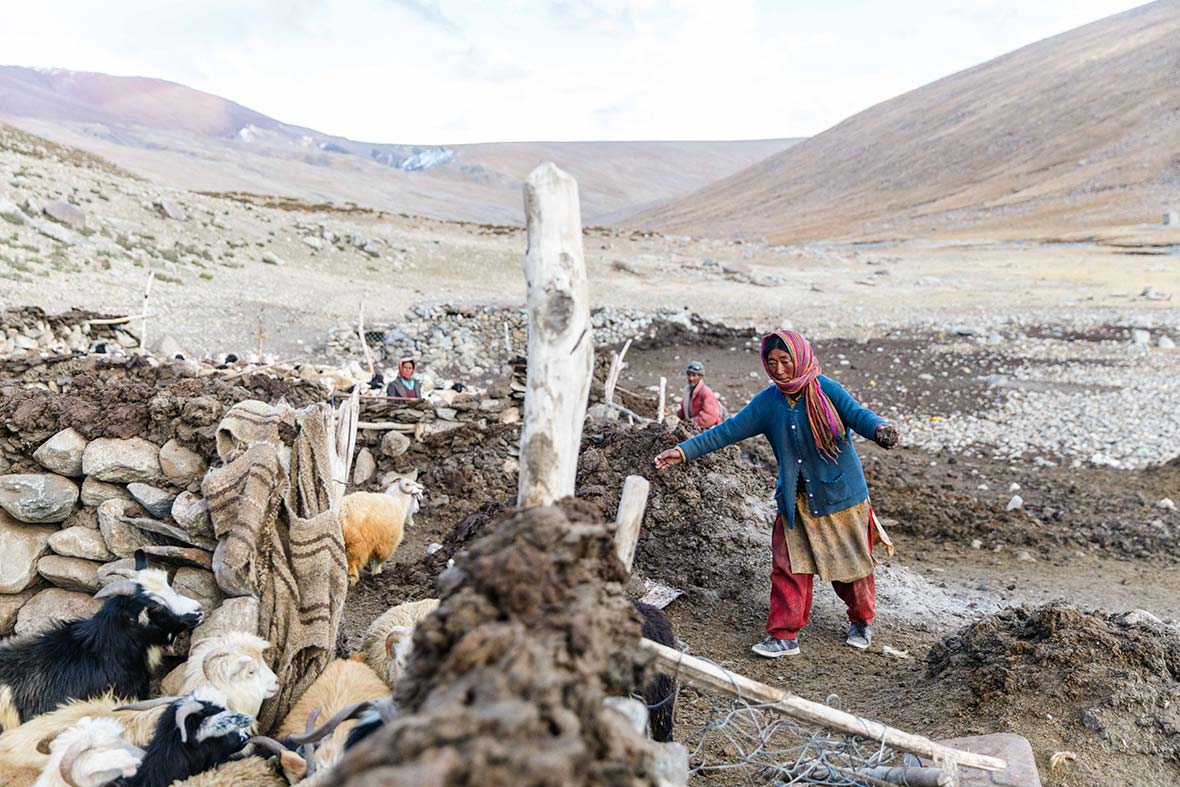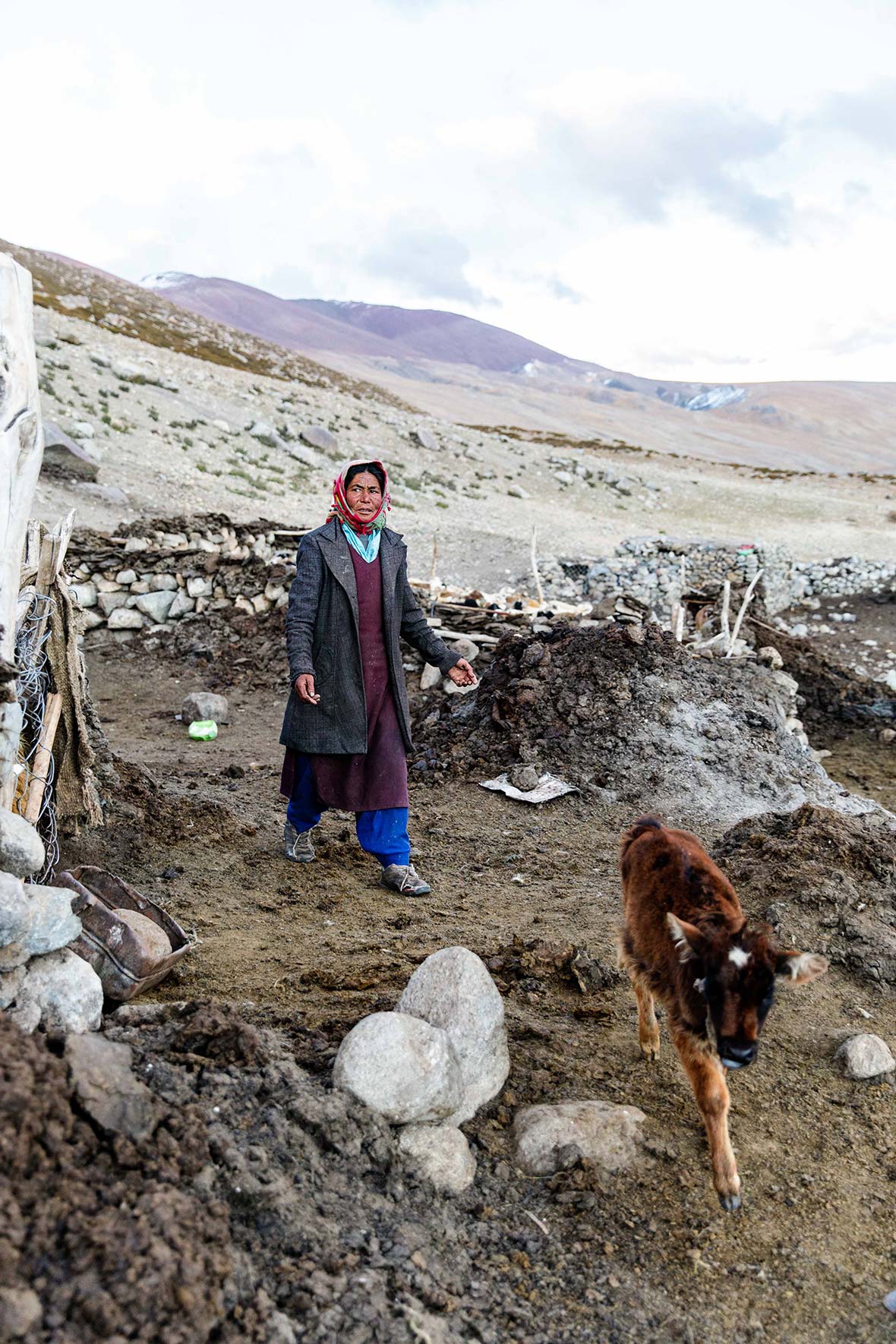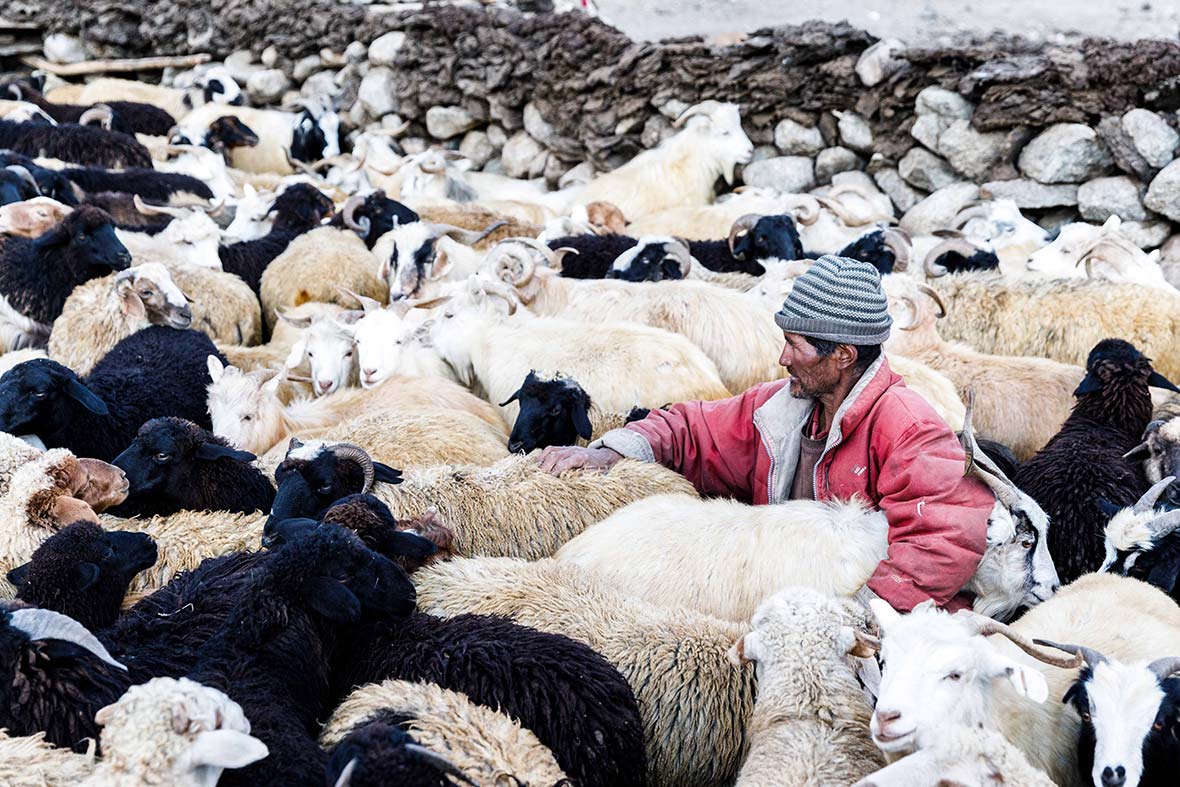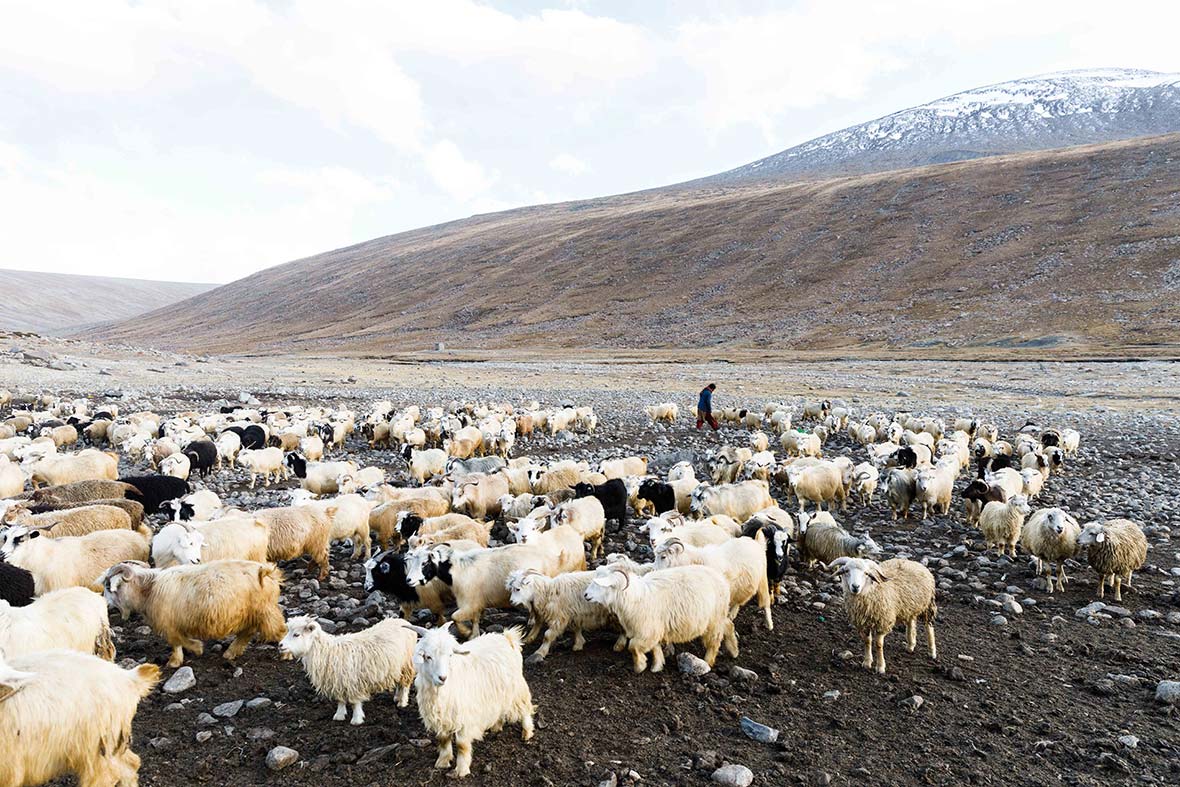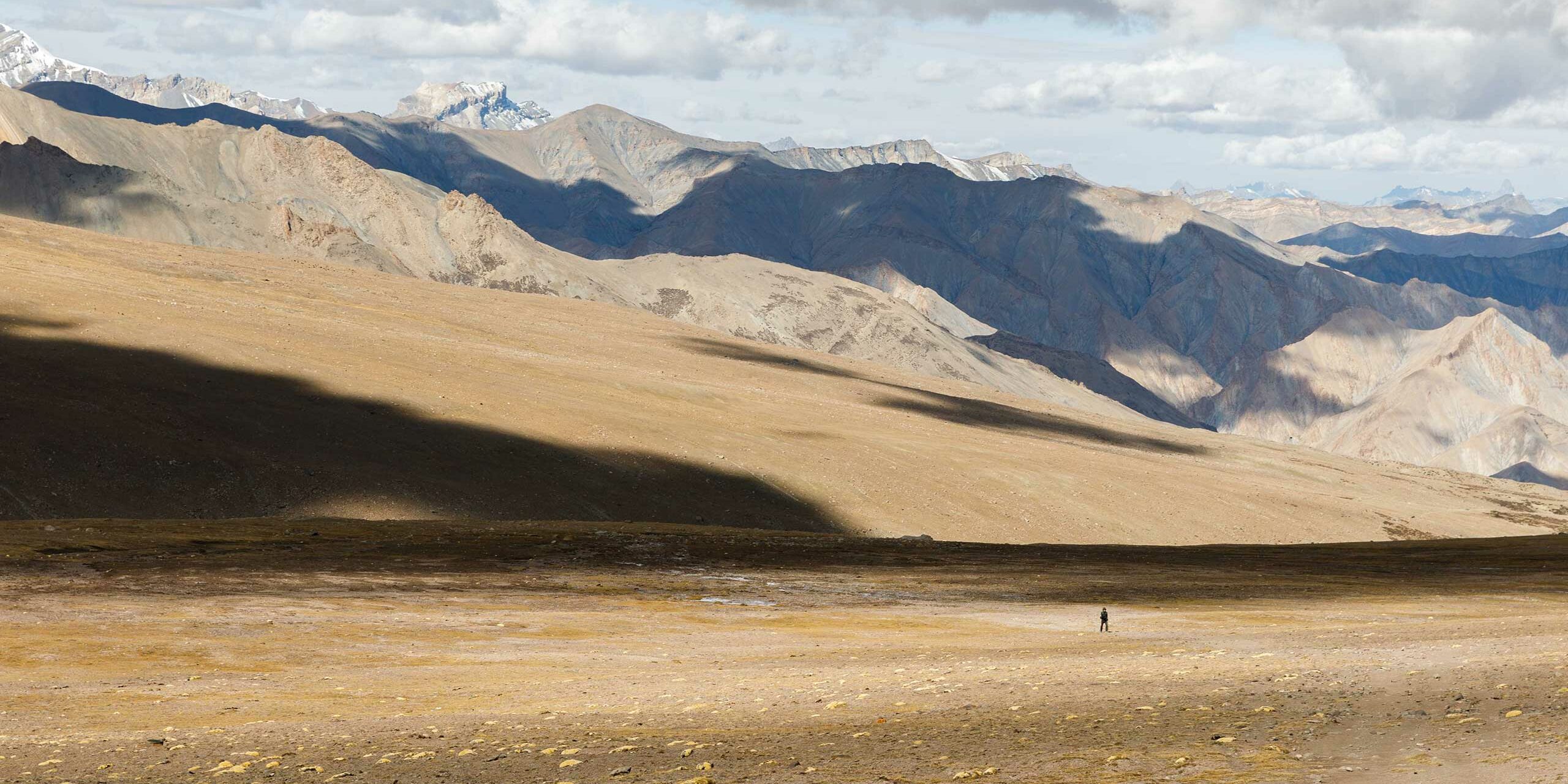
Ladakh’s natural mountain barrier and harsh winters make it one of India’s most remote frontiers. The natural beauty of the landscape has made it a popular summer destination for both local tourists and foreigners, who are attracted by the allure of Himalayan peaks, Buddhist festivals and sites like Pangong Tso, a high altitude lake featured on the popular Bollywood film 3 Idiots. After years of isolation, much of the state is now open to tourism and accessible by 4×4 or motorbike. If you want to discover Ladakh before roads and technology and to see the traditional Ladakhi life, you need to hike.
After warming up on the Sham Valley trek, I decided to take to one of Ladakh’s most famous hikes — the Markha Valley Trek. Only a few hours drive from Leh, the Markha Valley is remote and roadless (apart from its access points). The hike takes you along the Markha river, past remote villages, through barley fields and across the 5200m Kongmaru-la Pass. The entirety of the trek takes place within the Hemis National Park, a large area of natural beauty in the heart of Ladakh. Along the way, it’s the perfect opportunity to experience Ladakhi culture, try cooking local foods and get a taste of what life in a remote Himalayan valley is like. I set off for the 5-day hike at the end of September with my local guide Chostar and my hiking boots ready for adventure.
The trek starts with a drive out of Leh, the road snaking through the valley where the Indus reaches the Zanskar rivers. It’s a bumpy journey by 4×4, although the scenery is spectacular. We leave the car just before the village of Kaya, and begin to hike up into the valley. It would be 5 days before we’d spot another vehicle.
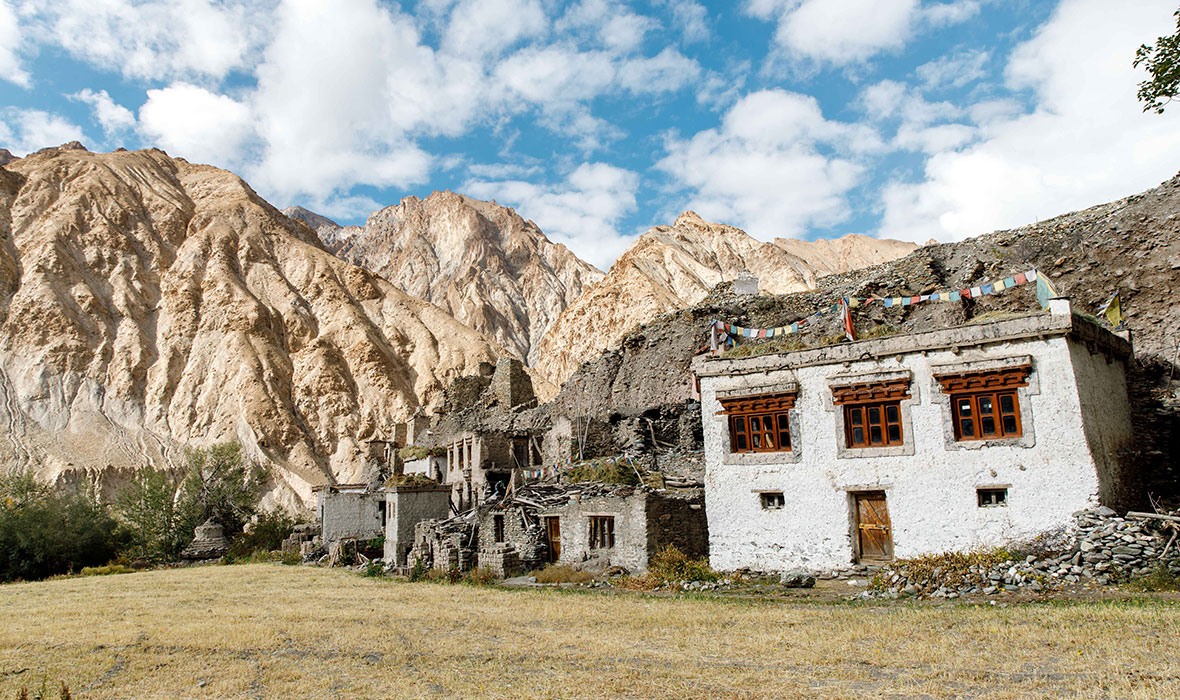
The whole of Ladakh is high — Leh, city where you’ll likely fly into is at 3,500m, and you’ll rarely go lower than that throughout your trip around the territory. The Markha Valley trek takes you to over 5,200m, although the ascent is gradual and with correct acclimatisation in Leh and the help of a local guide, you are not likely to have any issues.
From Kaya, Skiu is our next village stop, the trail now is steady and the landscape is alive and colourful. In this late September weather, the fauna along the Markha river is painted shades of gold and maroon. The village of Sara is our destination for our first night, where we are staying in a local eco-homestay, which uses solar power for lighting and warm water in the evenings. On arrival we are served local beer made from fermented barley, it’s pungent and strong – the locals love it but it can be an acquired taste for a visitor.
The sunrises on Day 2, and after a breakfast of local flatbread with homemade apricot jam – we are off to Markha, a village in the heart of the Markha Valley. The path for the first few days of the trek is steady and the climb is gradual. We enjoy listening to our guide Choslar speak about local Buddhism, and his experiences exploring the Markha region in winter, a time when only the most adventurous trek.
Markha village is made up of traditional stone houses set around barely fields. It’s harvest time, and piles of drying barley sit where in summer there would be green lush fields. A hike later in the season means fewer visitors on the trail, but also the landscape and locals have begun preparing for the harsh winter months, some have already left to spend winter in the city. In Markha we stay with a local woman called Padma, in her house on the edge of the village. In her garden, we collect fresh peas and spinach and made the local dish of chu-tagi — with pasta-style dumplings in a vegetable sauce – around the fire as the temperature drops in the evening.
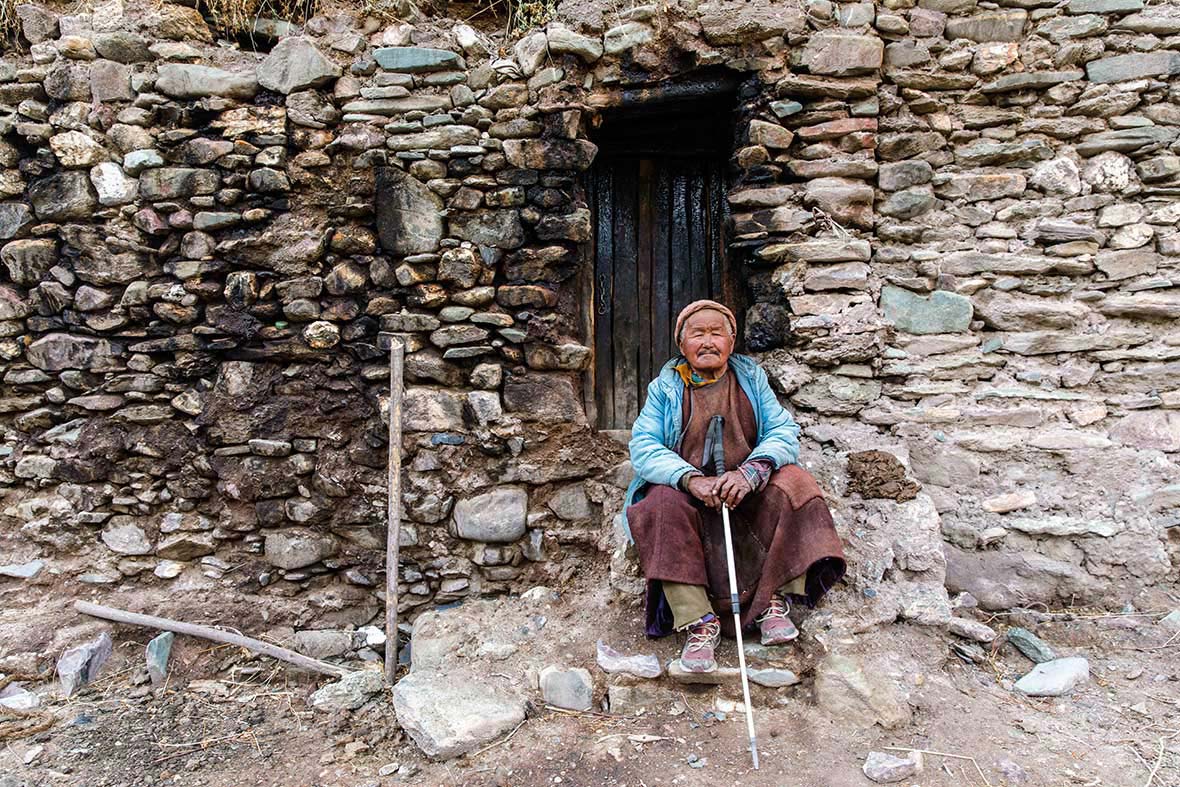
The next day we leave Markha and follow the river to Hanker, the final village in the Markha valley and the most beautiful. Hanker is a traditional Ladakhi village with flat-roofed houses used to store bales of barley. Next to each house is a shelter for animals — although they now graze in the fields which form a sunken valley around Hanker. Above us we can see the 6,400m peak Kang Yatze.
Halfway to Hanker we pause to climb unto Techa Monastery. The two gompas here date back to the 11th century, and a monk from the large Hemis Monastery in the Indus Valley lives here for a year before another takes over. The monk Tenzin serves us sweet milky tea, before showing us the unique paintings on the walls of the old gompas. A few hours along the river we pause again at Umlung village, where 3 families live. The barley harvest is in full swing here — with the elder of the community tying bales of the staple crop together. Barley is the core crop of Ladakh. The local butter tea is mixed with barley powder, and its used to make bread and local dishes such as chu-nagi and momos. The Indian influence has meant that rice has also become an important part of the Ladakhi diet in less remote areas, where it is transported from the Southern Indian plains. But here, barley is still a key part of the diet, particularly during winter when the roads at the edges of the valley are inaccessible.
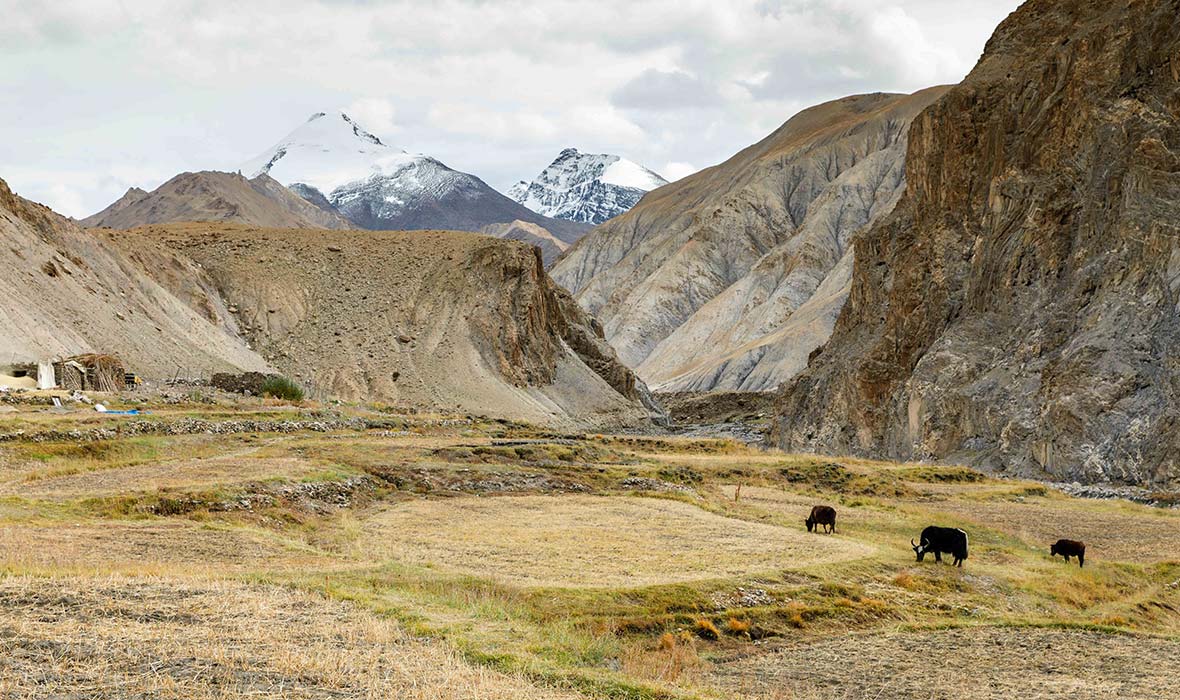
The young mother of the family serves us local apple juice and we continue to the Mongolian-like steppes of lower Hanker, where horses roam in open pastures below snowy mountains. The view is sensational, but we climb to Upper Hanker where it’s even better. We are greeted by our homestay family for the evening. They are a three-generation household, and like many of the young people in this area, most of the third generation are living in Leh for work or elsewhere in India for study. We make momo’s and then step outside to watch the blankets of stars above our heads at these clean, high altitudes.
On the days leading to Hanker, the Markha Valley trail is relatively flat and moderate. It’s here the hiking became more difficult. For 6 hours we walk up a rocky valley, the sun bursting down as we made our way towards Nemaling. We stop for lunch on the edges of a mountain lake. A herd of Yaks are grazing and drinking nearby, and a statue of the Khamtrul Rinpoche, the leader of the Drukpa lineage of Tibetan Buddhism, the main religion in this area of Ladakh.
The autumn colours of the lower Markha valley are behind us, and at almost 4,500m in altitude, the landscape is open and barren. With rocky mountains framing the open plains and small, dry shrubs around provide food for the yaks and other animals which graze here in the summer months.
We reach Nemaling a few hours later and are treated to warm bowls of Maggi noodles — a Ladakhi favorite. Nemaling camp is located at 4,800m in altitude, and there is no village at this height, so during the summer months, some intrepid locals set up camp for passing trekkers. It’s not as comfortable as a homestay, but the layers of blankets keep me warm as the temperature plummets below freezing during the night. During the summer, a group of herders from Markha village bring their goats and yaks to live on this open plain. At dusk, they gather their herd from the hills and pile them into pens at the base of the Kongmaru Pass.
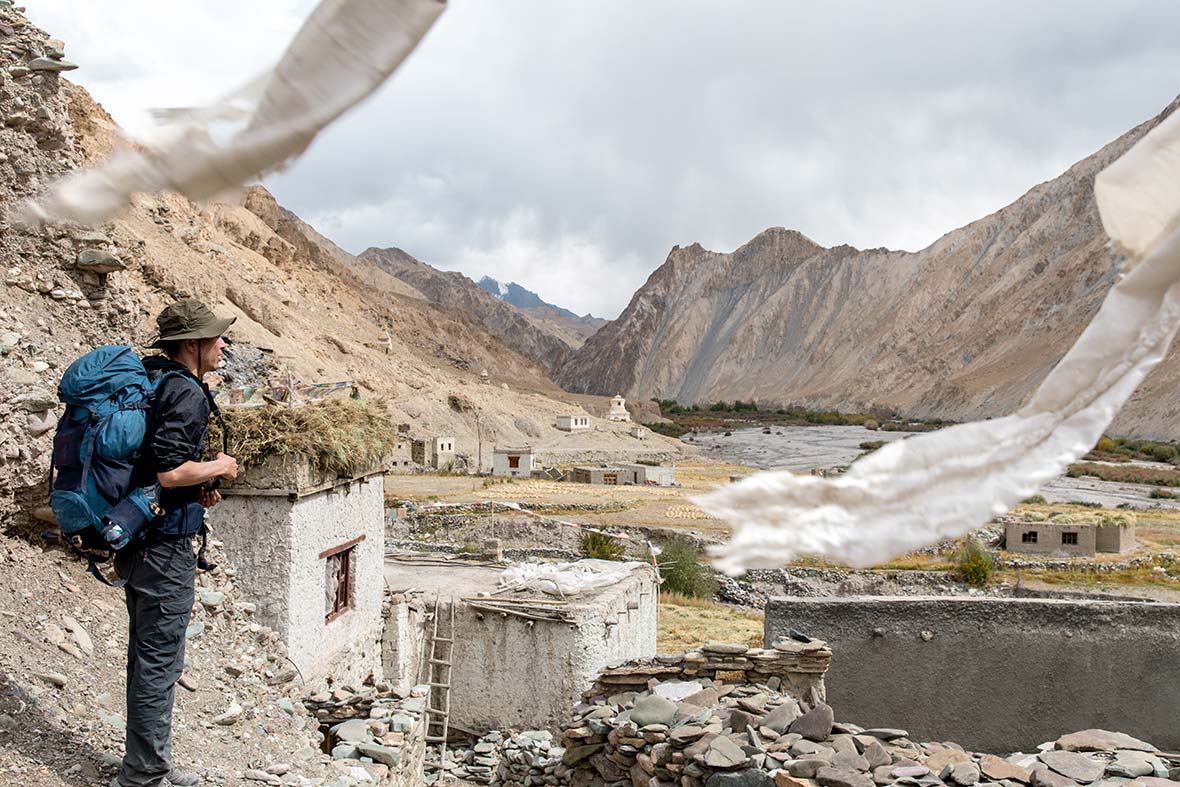
The next day we awake to snow scattering along the ground, and the high Himalayas which frame the Nemaling camp covered in a fresh layer. The area is stunning, and it only gets more spectacular as we climb up to the Kongmaru Pass, where we can glimpse at a panorama of the Karakoram range. At 5,200m, the wind is harsh and freezing — and it’s hard not to notice the lack of oxygen in the air. The sun is now hidden beneath clouds as they move and gather over the peaks, constantly changing to give us different perspectives of the landscape which lives around us. Our ascent begins, through red and emerald valleys stained from the minerals in the rock, until we finish at Shong Sumdo — where electricity cooling beers and a car to take us back to Leh awaits.

